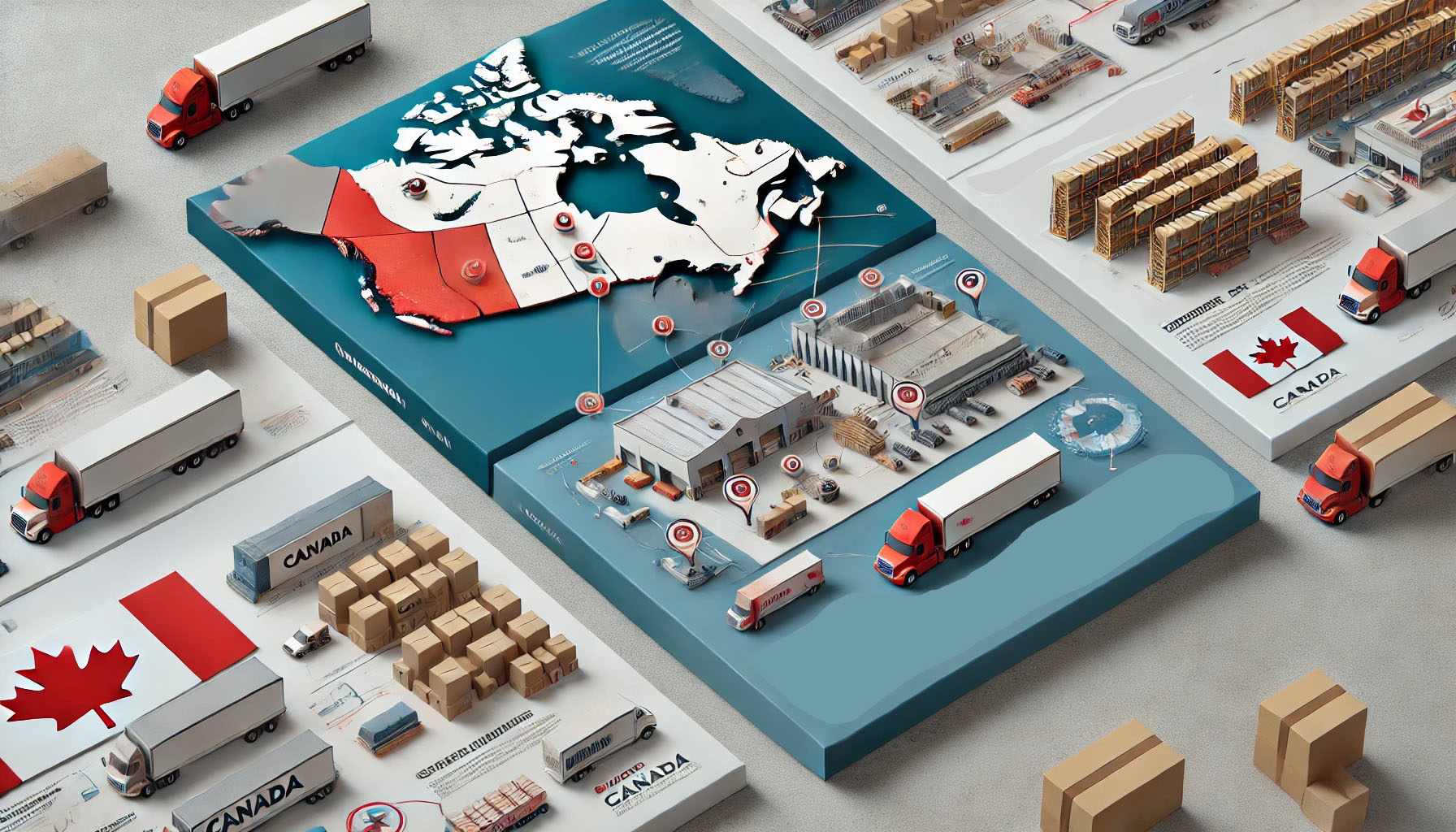Reducing Cross-Border Shipping Costs: Strategies for Canadian eCommerce Businesses

Cross-border shipping expenses can quickly eat into the profits of Canadian eCommerce sellers, especially when venturing into the lucrative—but sometimes complex—U.S. market. Between carrier surcharges, currency fluctuations, and customs fees, the final bill can look daunting. Yet, managing and reducing cross-border shipping costs doesn’t have to be an uphill battle.
In this article, we’ll explore practical strategies to help you negotiate better rates, optimize packaging, consolidate shipments, and leverage technology. Whether you’re a small startup hoping to expand beyond Canada or a mid-sized retailer looking to tighten your logistics budget, these tactics can help keep shipping expenses in check—while improving customer satisfaction. And if you need a partner to guide you through cost-saving opportunities, Breakthrough Studio specializes in cross-border logistics solutions that make shipping both efficient and budget-friendly for Canadian eCommerce brands.
1. Rate Shopping & Negotiation
1.1 Comparing Carriers
Not all carriers are created equal—especially when it comes to international shipping. One carrier might offer competitive rates for small parcels but inflate costs for heavier or oversized packages. Another might excel in speed but charge a premium that’s not sustainable for your profit margins. Always:
- Request quotes from multiple carriers (UPS, FedEx, DHL, Canada Post, etc.).
- Consider carrier alliances or “partner programs” that offer discounts to certain industries or trade groups.
- Check transit times to ensure that lower costs don’t mean excessively long deliveries.
1.2 Volume Discounts & Contracts
If your order volume is growing—or you expect a seasonal spike—leverage that information to negotiate tiered pricing. Carriers often lower per-package rates once you cross certain shipping thresholds. Make sure your shipping forecasts are realistic; if you overpromise on volume, you could end up paying higher rates or incurring penalties.
1.3 Using a 3PL’s Collective Bargaining Power
A third-party logistics (3PL) provider like Breakthrough Studio typically ships on behalf of multiple clients, pooling their combined volume to negotiate bulk discounts. These savings can be passed on to your business, often beating the rates you’d get by negotiating alone.
1.4 Timing & Seasonal Planning
Peak seasons like the winter holidays can drive rates up due to carrier surcharges. Whenever possible, plan major promotions or product launches before or after these peaks. Alternatively, factor potential surcharges into your budget and consider raising shipping thresholds or offering slower (but cheaper) shipping options.
Breakthrough Tip: Ask Breakthrough Studio about our carrier relationship programs. By consolidating shipments across various clients, we help Canadian eCommerce brands secure cost-effective rates year-round.
2. Packaging & Weight Optimization
2.1 Understanding Dimensional Weight
Carriers don’t just charge based on actual weight; they also consider dimensional weight, which calculates shipping fees based on box size. If your packaging is bulkier than necessary, you might be paying for empty space. To optimize:
- Use smaller, custom-sized boxes that closely fit your products.
- Invest in lightweight but sturdy packaging materials.
- Remove excess fill or switch to eco-friendly alternatives that take up less space.
2.2 Bulk Packing vs. Individual Shipping
If you’re sending multiple items to the same location—such as products to a U.S. fulfillment center—bulk packing can significantly reduce per-unit shipping costs. Rather than shipping each product individually, consolidate them into a single shipment and let your U.S. facility handle last-mile deliveries.
2.3 Reusable & Returnable Packaging
For brands with high return rates (like apparel), consider reusable packaging that can serve as both the outgoing shipment box and the return box. This can minimize material costs and align with sustainability goals, which can be a selling point for environmentally conscious consumers.
Breakthrough Tip: Breakthrough Studio works with suppliers who offer custom box sizes and low-cost yet durable packaging materials. We also provide expertise on consolidating shipments to minimize your dimensional weight charges.
3. Freight Consolidation & 3PL Solutions
3.1 Less-Than-Truckload (LTL) and Full Truckload (FTL)
If your cross-border orders are large enough, shipping via LTL or FTL freight can be more cost-effective than parcel carriers. In LTL, multiple shippers share space on one truck, splitting costs. However, if your volume is sizable, FTL might provide an even lower rate per unit—though you pay for an entire truck.
3.2 Group Shipping Initiatives
Some 3PLs organize group shipping deals where small businesses pool together shipments heading to the same region. This consolidation lowers overall costs and makes shipping more predictable.
3.3 Cross-Border Warehousing
Storing some of your inventory in a U.S. warehouse reduces cross-border trips. You can bulk-ship products monthly or quarterly to the States, then fulfill domestic U.S. orders directly from that warehouse, cutting down on individual cross-border fees.
Breakthrough Tip: By consolidating shipments at Breakthrough Studio’s Canadian or U.S. facilities, you tap into efficient transport routes and reduce repetitive cross-border charges. Our integrated system tracks shipments, so you can monitor product movement in real time.
3.4 Partnering with a 3PL
A quality 3PL handles more than just warehousing—they often provide end-to-end logistics solutions that include international freight forwarding, customs brokerage, and carrier negotiations. This one-stop approach can streamline operations and unlock economies of scale you couldn’t achieve on your own.
4. Leveraging Technology
4.1 Freight Rate Comparison Tools
Today’s software solutions let you compare shipping quotes from various carriers at once. Some platforms integrate directly with eCommerce sites, auto-selecting the most cost-effective carrier based on package size, weight, and destination.
4.2 Real-Time Shipping Updates
Providing live tracking and delivery estimates not only enhances customer satisfaction but also helps you spot delays or bottlenecks. If a certain route frequently encounters customs holdups, you can reroute future shipments or adjust carrier selection.
4.3 Automated Label Generation & Paperwork
Generating customs forms and shipping labels by hand is time-consuming and error-prone. Automating these tasks reduces manual input—and consequently, the risk of misclassifications or address mistakes.
Breakthrough Tip: Breakthrough Studio integrates advanced shipping software that automatically chooses the best carrier rate in real time. We also handle electronic customs documentation, ensuring accuracy and faster border clearance.
5. Case Study: A Canadian SME Success Story
5.1 The Challenge
A growing Toronto-based lifestyle brand specializing in eco-friendly household products struggled with high shipping costs to their expanding U.S. customer base. They shipped parcels individually, each subject to steep carrier rates and repeated customs fees.
5.2 The Strategy
By partnering with a 3PL, the brand consolidated weekly orders and shipped them as bulk freight to a U.S. distribution center. From there, domestic carriers handled last-mile deliveries at significantly reduced rates. The 3PL also optimized packaging by introducing smaller boxes and lighter filler materials to cut dimensional weight costs.
5.3 The Results
- 20% reduction in overall shipping expenses.
- 25% faster delivery to U.S. customers in major metropolitan areas.
- Drastically fewer customs-related delays due to accurate, automated documentation.
Breakthrough Tip: Stories like these are typical for businesses partnering with Breakthrough Studio. Through strategic consolidation, packaging optimization, and automated shipping tools, we’ve helped countless Canadian eCommerce brands slash costs and improve delivery times.
Conclusion (Approx. 150 words)
Cross-border shipping doesn’t have to be a profit-draining headache. By shopping around for the best rates, negotiating volume discounts, optimizing packaging, and consolidating shipments, Canadian eCommerce businesses can significantly lower shipping expenses—all while meeting or exceeding customer delivery expectations.
Remember to leverage technology to streamline processes and gain real-time visibility into carrier performance. And if you prefer a partner that handles the heavy lifting, consider a 3PL like Breakthrough Studio, which merges advanced logistics tech with cost-saving strategies tailored for cross-border shipments.
Ready for more insights? Check out our Cross-Border Shipping 101: Essential Steps for Seamless Canada-to-USA Deliveries to learn how to navigate customs paperwork, choose the right carriers, and enhance the overall shipping experience for your U.S. customers.
Final Tips
- Analyze Your Data: Track shipping spend per order and look for recurring inefficiencies or patterns.
- Test Different Approaches: Compare parcel vs. freight, or in-house vs. 3PL solutions, to see which yields the best ROI.
- Stay Current on Trade Agreements: Regularly review NAFTA/USMCA updates to ensure you’re benefiting from any tariff reductions.
- Communicate with Customers: Offer clear shipping cost breakdowns at checkout—transparency fosters trust and can even justify slightly higher charges.
With the right strategies in place, your cross-border shipping can shift from a daunting expense to a controlled and optimized part of your eCommerce operations.




